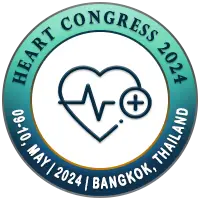
Mengmeng Ye
Air Force Medical University of PLA, ChinaTitle: Endovascular reperfusion followed by delayed open aortic repair for stable acute type A aortic dissection (ATAAD) patients with malperfusion syndrome (MPS): A single center experience in 777 patients
Abstract
Objective: To assess outcomes of endovascular reperfusion followed by delayed open aortic repair for stable acute type A aortic dissection (ATAAD) patients with MPS. Additionally, factors contributing to ATAAD patients with MPS presenting as death associated with organ failure were evaluated.
Methods: From 2018 to 2022, 777 patients with ATAAD who presented to our center, of which 121 (15.57%) with MPS underwent upfront aortic and/or branch stenting followed by aortic repair. Outcomes were analyzed and compared, including in-hospital mortality and long-term survival. ATAAD patients with no malperfusion syndrome of any organ (n=656, 84.43%) served as controls. Factors contributing to ATAAD patient with MPS presenting with death associated with organ failure were evaluated by regression analysis using stepwise logistic regression, with an inclusion threshold for the multivariable model of p < 0.10 for candidate variables on single-variable logistic regression.
Results: The overall hospital mortality rate for patients with MPS was 37.19%. After aortic and/or branch stenting by interventional radiology, 28 (23.14%) MPS patients died from organ failure and 8 (6.61%) from aortic rupture before open aortic repair, 8 (6.61%) survived without open repair, eventually, 77 (65.2%) underwent aortic repair.The significant risk factors for death from organ failure after endovascular reperfusion was FDP (odds ratio (OR)= 1.06; 95% CI: 1.03~1.12; p=0.003), D-Dimer (OR=0.85;95% CI:0.75~0.93; p=0.008)and FDP/D-Dimer ratio (OR=0.57; 95% CI:0.27~0.80; p=0.039). Although MPS patients who received open aortic repair had a higher incidence of postoperative requiring new dialysis for acute kidney failure (27.6% vs 12.2%, p=0.0003) and increased length of stay, there was no significant difference in operative mortality (11.69% vs 8.23%, p=0.306) or long-term survival between patients who underwent open aortic repair after recovering from MPS and non-MPS patients.
Conclusions: ATAAD patients with MPS could be performed with endovascular stenting followed by delayed open aortic repair, and have a favorable impact on the short- and long-term outcomes. Stenting of aorta and/or aortic branches is a relatively simple and less-invasive intervention with long-term patency.
Biography
To be Updated

